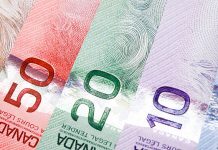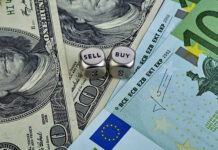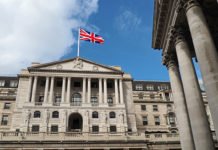European investors got an energy boost from lower inflation reads, and the falling nat gas futures, but US investors didn’t follow up on the cheery market mood.
However, US sovereign bonds gained yesterday as an indication that the latest market moves were backed by recession fears, rather than hawkish Federal Reserve (Fed) expectations… And that could be a gamechanger for the stock-bond correlation this year.
Softer inflation won’t change ECB’s stance
If European stocks were cheery yesterday, it was certainly due to an unexpected drop in German inflation below the 10% mark, a softer Spanish inflation, and a further slide in nat gas futures due to an abnormally mild winter – which also boosted the idea that inflation could further ease if energy prices – which are mostly responsible for the sky-high European inflation eased.
And if inflation starts falling at this speed in Europe, the European Central Bank (ECB) won’t need to worry about fighting it so aggressively.
As such, the softer ECB expectations were mostly responsible for yesterday’s rally in the European stocks. The DAX gained 0.80%, while EuroStoxx50 jumped 1%.
The problem with all this is, a single data point won’t change the ECB’s policy stance.
More importantly, yesterday’s German CPI data was because the government paid some energy bills, and the headline figure obscured the increase in food costs across the country, along with tighter than expected job conditions, which could also make inflation stickier than ideal.
And finally, if we think that the euro appreciation helped the European stocks gain weight since October, the slowing appreciation may pull the rug from under their feet.
Could negative stock-bond correlation come back?
The US indices didn’t follow up on their European peers’ gains… at all. And the pain for the US risk assets started in the European session.
Combined to the dovish ECB bets, the EURUSD was trading 1.50% down at some point yesterday, Cable slipped below the 1.20 and tested the 50-DMA to the downside, while the Japanese yen couldn’t extend strength below the 130 against the US dollar.
What’s interesting in all this is that the US yields were lower, meaning that investors bought treasuries while selling stocks, and the US dollar didn’t really react to softer yields.
If the first trading day of the year is any indication, could we see the holy negative correlation between stocks and bonds come back in 2023? This is what many investors think will happen. The risk-off investors will likely continue exiting stocks on profit recession – and not on hawkish Fed expectations, and they could go back to bonds instead.
In summary, if the major market catalyzer becomes recession, rather than hawkish Fed, we could see the negative correlation between stocks and bonds come back.
And, if the falling yields couldn’t boost sentiment in the US stocks yesterday, they certainly boosted appetite in the non-interest-bearing gold, which saw the opportunity cost of holding the yellow metal fall. The price of an ounce rallied to $1823, and could well benefit from a further fall in US yields – in which case we would also see gold become an effective hedge against fresh market routs.
Data watch
But let’s not cry victory so fast, because the US economic data will say the last word on whether the Fed expectations will remain on the back seat. Due today, the ISM manufacturing index will reveal if and how fast US manufacturing contracted last month. If yesterday’s PMI is any hint, we could see a fastening contraction in ISM manufacturing, which would then boost recession worries, hit the stocks, but not necessarily the bonds and gold.
Also, JOLTS data will show if, and by how much the US job openings fell in November.
But regardless of the ISM data, and the US job openings, the FOMC minutes will likely confirm that the Fed remains serious about further tightening policy, even if it slows the pace of interest rate hikes. Remember, if the Fed decided to go slower on its rate hikes, it’s to be able to go higher! And the more resilient the US economy and the US jobs market, the more eager the Fed will be to continue its journey north.













